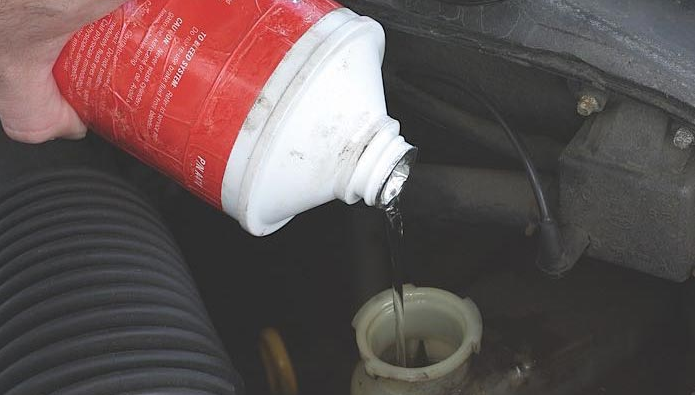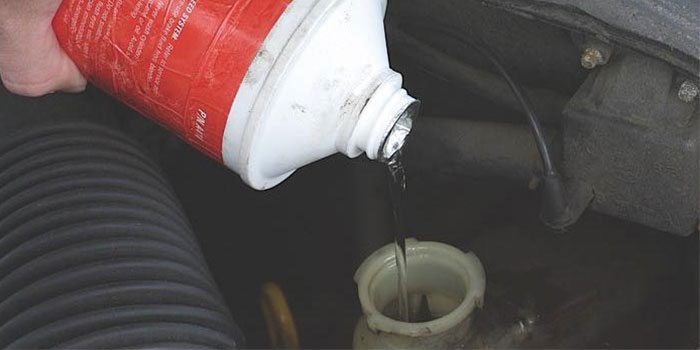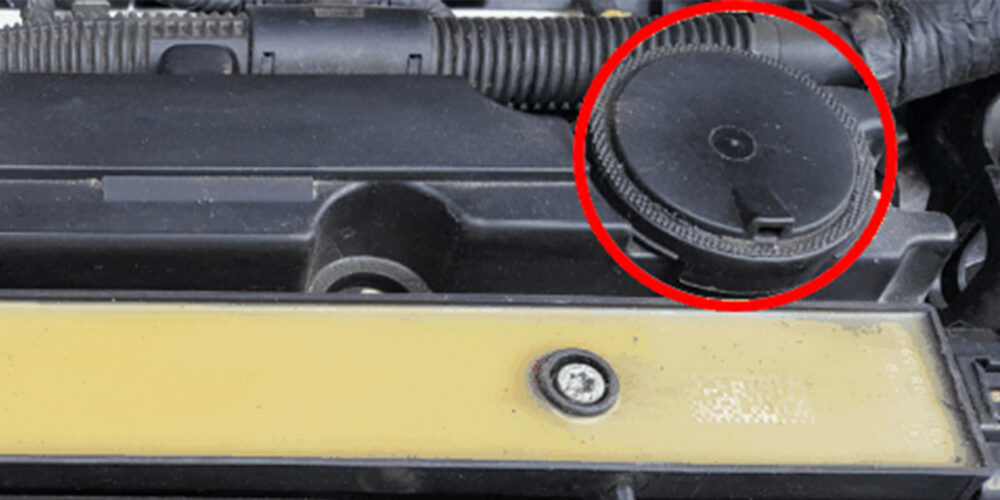
Selling brake flushes is a great preventive maintenance service to offer your customers for a number of reasons. However, unlike oil changes and tire rotations, many customers don’t know the benefits that brake flushes can have on their vehicle’s performance. It is up to you to educate your consumers on the benefits this service offers.
Why Brake Fluid Wears Out
Brake fluid is comprised of a base oil and an additive package. The additive package controls the pH, cavitation, viscosity and other physical properties.
Heat and physical stresses on the base fluid and additive package can cause brake fluid to break down over time. Once the additive package is depleted, damage to the brake system can quickly occur.
Another major enemy of brake fluid is moisture. Once moisture enters the master brake cylinder reservoir, it begins to lower the boiling temperature. Brake fluids that are susceptible to this contamination are glycol-ether hygroscopic (water absorbing) fluids such as DOT 3, DOT 4 and DOT 5.1.
Having a brake fluid with a high boiling temperature is necessary to withstand the heat that can be generated from heavy brake use, such as that associated with multiple hard stops or driving on steep terrain. While most of the vehicles coming into your shop will probably contain DOT 4, you should be aware of how water in the various fluids impacts the boiling point.
Why Selling Brake Fluid Flushes is Easier Than You Think
If you aren’t currently pushing brake flushes to your customers, there are several factors you should keep top-of-mind that work in your favor:
• Price: Any maintenance service that doesn’t require the customer to allocate hundreds of dollars from their rainy day fund is one you should be comfortable discussing. The affordability of this service allows you to broach the subject without price becoming a major obstacle.
• Time: Because brake flushes don’t require a substantial amount of time, customers are more apt to “OK” a service that will allow them to get in and out of the shop quickly.
• Long-Term Savings: The prospect of spending a little bit of money now to save big down the line is a principle every customer will be able to embrace.
• Safety: Nobody wants to think about driving around on brakes that might suddenly give out. Discussing the possible safety implications of neglecting service can lay the groundwork for the customer to spring for a brake flush.
Push Savings & Longevity
It is important to let your customers know how moisture in brake fluid can corrode the caliper pistons and bores, master cylinders, wheel cylinders, brake lines and ABS modulators. You can position your brake fluid flush service as a small price to pay to help your customers avoid major bills down the line.
Like all services you sell, the more you’re able to educate the consumer on the benefits of preventive maintenance, the better. The scheduled maintenance interval for brake fluid flushes depends on several factors, including the quality of the brake fluid currently in the system, the brake system itself, the driving habits of the customer and the age of the brake components.
It is also important to be able to back up your sales pitch with documentation when it comes to selling the service.
Color and appearance can be misleading since some newer DOT 4 fluids can be yellow and darken over time. Some DOT 5.1 brake fluids can even be blue or red. Instead, fluid should be replaced if it is cloudy or you can see particles floating.
Test strips are available that can detect signs of corrosion to determine if the additive package is still working. Tools to measure the boiling point can also give a customer visual proof that the brake fluid needs to be replaced.
Article courtesy Brake & Front End.














